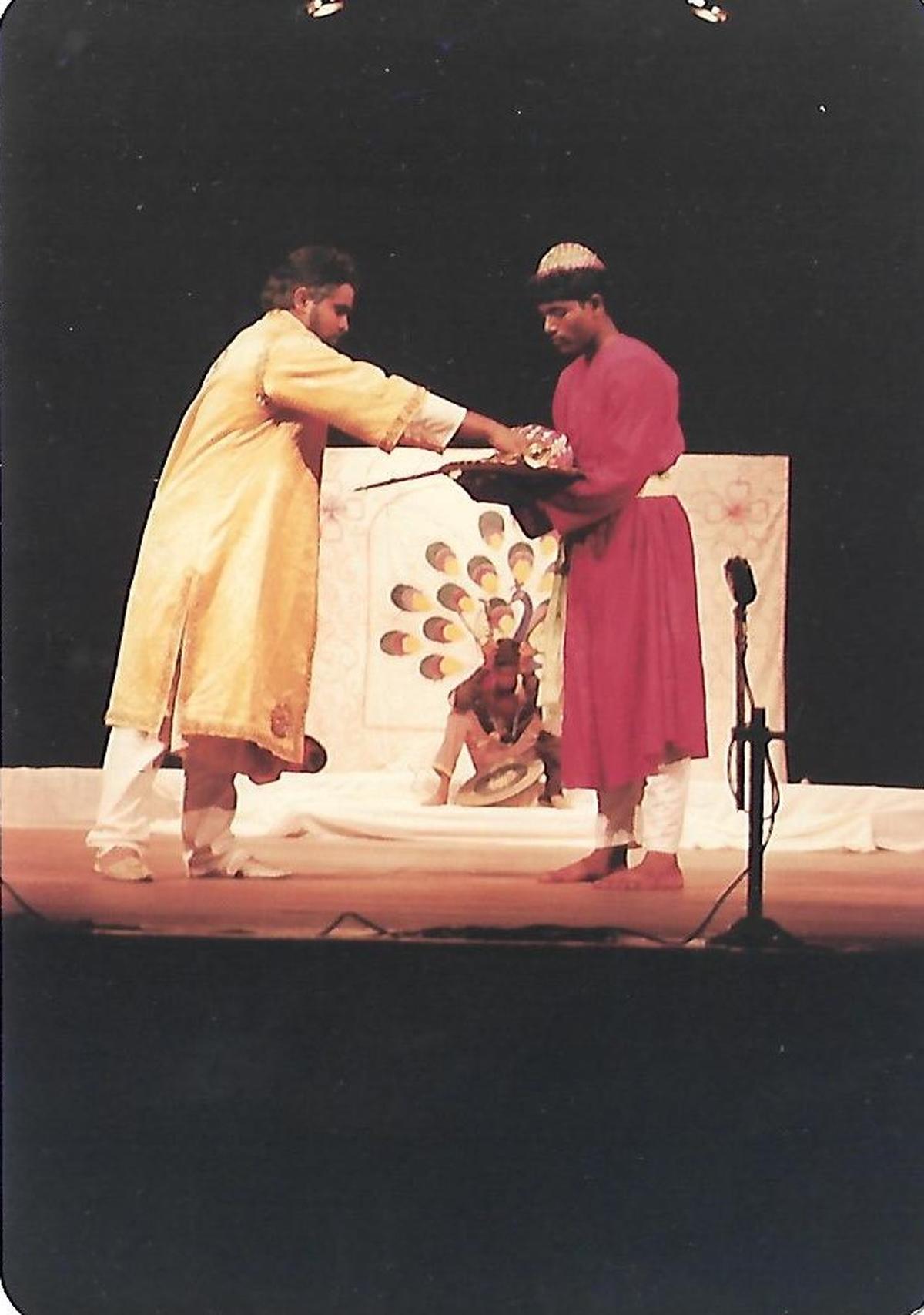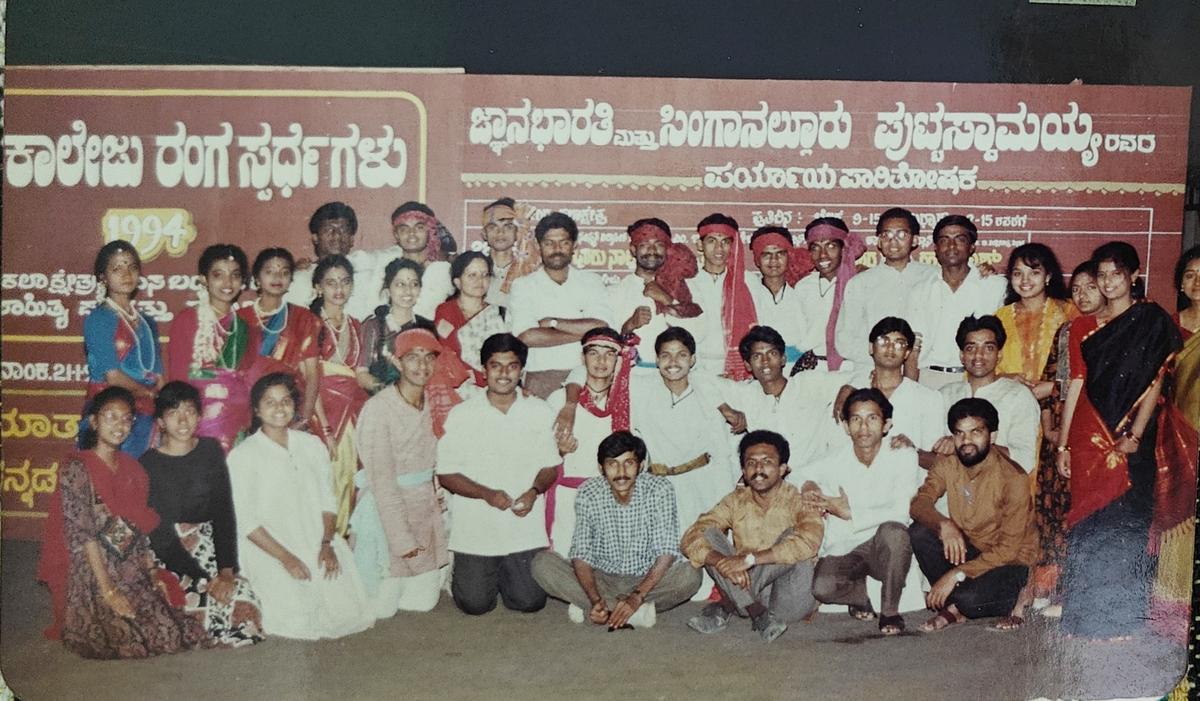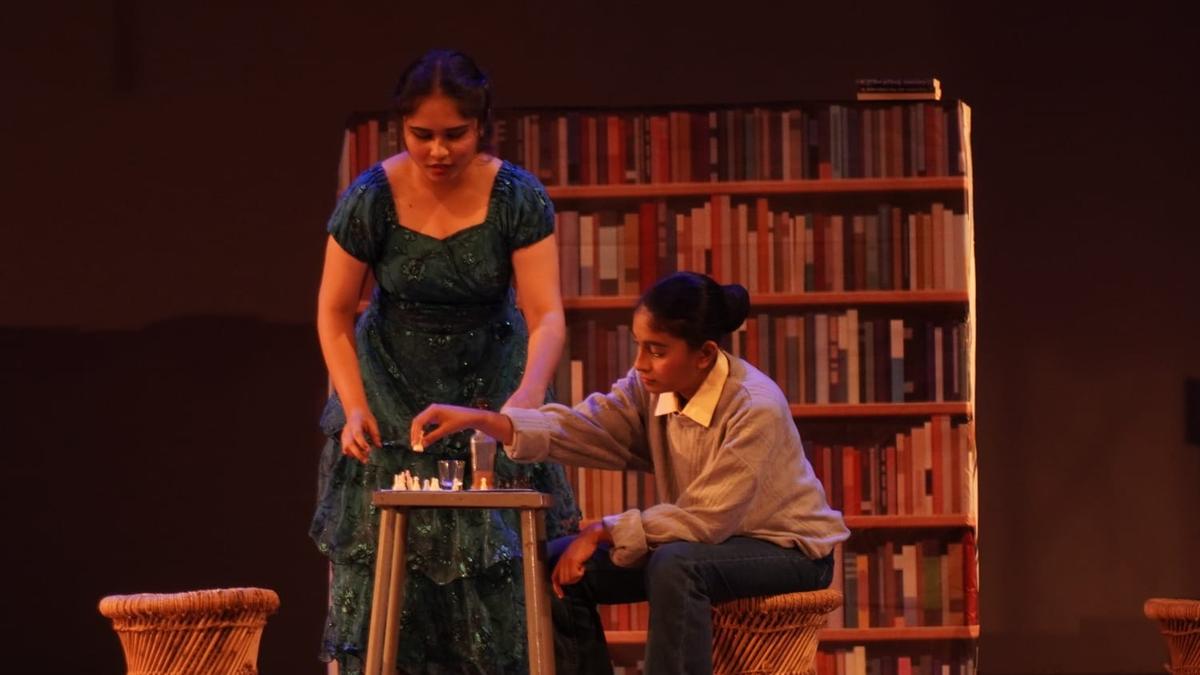NMKRV College for Women, once synonymous with college theatre in South Bengaluru, was a force to reckon with at competitions. The recent years, however, had seen a slump. So, when the dry spell was broken after over a decade and the college won first place at an inter-collegiate competition, “it was surreal and exhilarating,” says Sumana A.S., a Kannada lecturer and convenor of Natya, the college theatre club.
Bengaluru is home to a vibrant and dynamic amateur theatre scene, and the lifeblood of these troupes are students, a majority of whom are handpicked from college theatre clubs. The history of college theatre clubs in the city can be traced as far back as the year India gained Independence, 1947, when educator and rationalist Dr. H. Narasimhaiah started the National College Histrionic Club.
The encouragement from many freedom fighters, literary figures and educators, who were aware of the deep impact theatre could have on the youth by helping raise social consciousness and challenge stereotypes, drove students to join college clubs. Several stage, television and film actors we know of in Kannada today have been products of such clubs.
“College theatre has been a huge gift to amateur theatre. A massive Kannada celluloid figure like Vishnuvardhan was a product of the Histrionic Club. Popular film actors like Ganesh, Prema, Kishore or directors like K.M. Chaitanya, have all come from college theatre,” says K.V. Nagaraj Murthy, the chairperson of the Karnataka Nataka Academy.
College theatre has also been known to hone students’ self-expression and social skills. “An all-round development requires different kinds of activities that can inspire a person and give them new insights. Theatre sharpens the mind, makes it more receptive, and gives people a better understanding of themselves, of human nature, and of humanity,” says Laxmi Chandrashekar, theatre artiste and former convenor of NMKRV’s Natya.
What ails college theatre?
However, where colleges once vied with each other to get the best director, musicians or light technicians for their productions, today despite having more resources than ever at their disposal, the enthusiasm for theatre has noticeably waned among managements as well as students.
Lava Kumar with the students of Hashmi Theatre Forum, of St. Joseph’s College for Commerce in Bengaluru.
| Photo Credit:
Special arrangement
In most higher education institutions (HEIs), theatre clubs are necessitated by UGC guidelines and nurturing such clubs helps with better grades from the National Assessment and Accreditation Council (NAAC). NAAC’s assessment process is based on seven criteria. One such criterion is research, innovations, and extension (R, I, E) under which extra-curricular and co-curricular activities fall.
Therefore, the existence of co-curricular clubs and associations, and the number of awards and prizes received at the university, state, national, or international level have a say in NAAC ratings. While all colleges boast theatre clubs these days, many are struggling to remain afloat.
Multiple hurdles
Coordinators and convenors list myriad hurdles to running college theatre clubs. One often repeated challenge is the format of the academic year itself. With colleges transitioning to the semester system, students face exams once every three-and-a-half months, not to mention multiple internal assessments for every subject.
“Earlier students could dedicate around a month for a production, but directors now struggle to get even two hours with the team,” says Malathesh Badiger, a name many associate with Kannada college theatre.
Badiger has directed plays for several institutions, including GKVK, BMS Engineering College, Jain College, NMKRV, SSMRV to name a few. Recently, though, he was faced with the decision to reconsider his 25-year-old association one college. “We thought we would have to stop because the college was not supporting the coordinator.”

A still from Meghadhoota Darshanam, directed by Malathesh Badiger for SSMRV’s Rangantarang theatre team.
| Photo Credit:
Special arrangement
The lack of financial and moral backing from college managements and a disinterest towards truly fostering a culture of theatre in educational institutions is another issue flagged by teachers.
Colleges are unwilling to shell out more than ₹15,000 to ₹20,000 per production, including lights, costume, music and make-up, when in fact directors today expect ₹25,000 to ₹30,000 as their own remuneration, says Lava Kumar, a Kannada lecturer, who has been managing the Hashmi Theatre Forum at St. Joseph’s College of Commerce for 18 years.
Sreedhara Murthy, a retired professor of psychology, recalls his days as the convenor of NMKRV’s Natya. “I wanted students to participate in every activity that theatre involves and not just the play itself. So, I arranged workshops on poster-making, make-up, carpentry, music, property-making, costume design etc. As teachers, we must leave behind the arrogance that everything happens inside classrooms.”
Even when club convenors cross the hurdle of getting multiple permission letters for attendance and schedule rehearsal hours after coordinating the time-tables of students from different streams, there is the lack of infrastructure to contend with.
“You put together a team and invite a director, but there is no space to rehearse. No storage facility either for the set, property and costumes. It’s a challenge to sustain a rehearsal for even 15 days,” Kumar adds.
Sumana, an alumna of NKMRV and a theatre practitioner herself, narrates a disheartening incident around staging of their recent college production, Aduge Maneyallondu Huli (A Tiger in the Kitchen) written by B. Suresha and directed by Akshara Venugopal.
“The play won the first prize at an event by St. Joseph’s University but we hadn’t showcased it in front of parents, the staff and other students. I booked the college auditorium and the actors personally delivered handmade invites to every department. But on the day of the show, just before the third bell, I was asked to send all the students who had come to watch the play back to their classes. I did not relent but such is the atmosphere that by the time the first scene began, the only people left in a previously houseful auditorium were families of the actors and a handful of other students,” she recalls.
The intense academic stress, clubbed with indifference of college managements, often discourage students from exploring theatre in college. Torn between academics and artistic pursuits, many students choose to give up theatre altogether.
The only silver lining, perhaps, that keeps college theatre clubs going are inter-collegiate competitions.
Thrill of competitions
According to teachers, competitions motivate students to remain committed to a project for a month and work collectively towards a definitive end goal. “The allure of joining a theatre club for today’s students is in being able to compete in inter-collegiate events and lift the trophy. That’s where the thrill lies,” says Kumar.

A still from Dangeya Munchina Dinagalu directed by K.M. Chaitanya as a student production for Christ College, which won the Ullal Shield i 1991.
| Photo Credit:
Special arrangement
Among the popular inter-college theatre competitions back in the day was Ullal Shield which, many say, was akin to winning the Ranji Trophy. Kannada director K.M. Chaitanya, known for his films like Aa Dinagalu and Aatagaara, won the Ullal Shield in 1991 for his play Dangeya Munchina Dinagalu, which was adapted from Munshi Premchand’s Shatranj ke Khiladi.
“Back in 1991, Christ College was known for rock music, football and its college fest. There was no theater at all. The first play I directed then for Ullal Shield was the first play Christ College had ever produced. We were a mix of Kannada, Malayalam and Tamil speaking students, but we would write the dialogues in our native language and rehearse. And we won,” says Chaitanya.
While Ullal Shield is now defunct, there are other prestigious State-level intercollegiate competitions such as Umesh Rudra Shield, Jnanabharathi College Theatre Festival, Rangasourabha, and the Singanalluru Puttaswamaiah Paryaya Paritoshaka. Other popular inter-college events include Baptizer by Christ College, Enact by SJCC and Abhinaya by the Jain Group of Institutions.

Students of Christ College rehearsing the play ‘Dangeya Munchina Dinagalu’ directed by K.M. Chaitanya in 1991 in Bengaluru.
| Photo Credit:
Special arrangement

The Christ College Theatre team at the 1994 edition of the Jnanabharathi and Singanalluru Puttaswamaiah theatre competitions.
| Photo Credit:
Special arrangement
In recent years, theatre coordinators have also noticed attempts by managements as well as competitions to depoliticise theatre. Colleges actively reject plays with political themes, that delve too deep into gender issues, communal issues or ones that question State authority, they say.
“Nothing is apolitical,” says Laxmi, giving an example of Suresh Anagalli’s adaptation of Nenapadalu Shakuntale for NMKRV when she was in-charge of the club. “Anagalli wanted to interpret the text from a feminist lens and give Shakuntala the freedom to refuse to go back to the Dushyanta. He rejected Kalidasa‘s happy ending which many people objected to. That was a very political decision and we weren’t afraid,” she says.
Chaitanya, who now gets invited as a jury member to competitions, says the rules have become very strict, preventing students from engaging critically with politics or religion. “Plays essentially are an act of rebellion and theater is an outlet for that. Too many rules will stifle creativity and straitjacket students into producing lacklustre, message-driven productions,” he adds.
What next for college theatre?
While college theatre, bouyed by hopeful coordinators with a deep passion for the form, attempts to regain its sheen, support from cultural organisations as well as the government remains critical.
Acknowledging this, Nagaraja Murthy says plans are afoot to conduct a State-level college theatre festival – jointly organised by Karnataka Nataka Academy, Bharat Yatra Kendra and Rangasourabha – from January 16, 2025, onwards. “The Academy has also taken up the initiative to hold theatre workshops at colleges in 20 districts across Karnataka. We are also sending the directors from our end, as a mark of our commitment to making college theatre more robust and sustainable,” he adds.
Published – November 05, 2024 09:00 am IST
